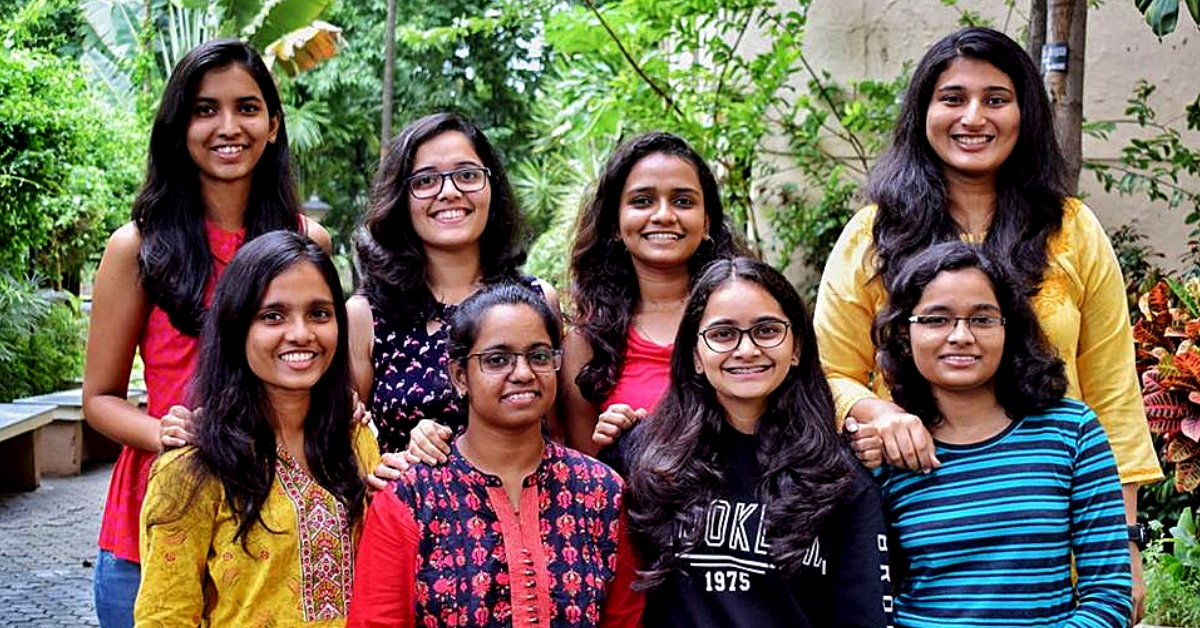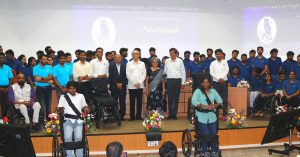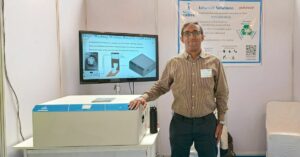Mumbai Girls’ Brilliant Way to Remove Paan Stains Could Save Railways Crores Every Year
Busy stations in Mumbai, like Sion, use up to 10 litres of acid every month to clean the stains. It takes the railway authorities over 60,000 litres of water and crores of rupees from the budget to clean the stains that are a result of the habits of careless people.

Railway stations, roads, roadside walls, and public places in India are never devoid of that telltale red paan stain. As disgusting as it is to see walls coated with it, it takes a lot of effort to scrub them off.
However, thanks to the efforts of eight girls from the Ramnarain Ruia college in Mumbai, these efforts can now be minimised.
The team comprising Aishwarya Rajurkar, Anjali Vaidya, Komal Parab, Maithili Savant, Mitali Patil, Nishtha Pange, Sanika Ambre and Shrutika Sawant were on a quest to find an easy method to clean the paan stains from the railway stations of Mumbai.
As the footfall in almost every station is in thousands, surely stained walls, floors, stairs and even trains are a huge problem. The innovators wanted to tackle precisely this.

Speaking to the Times of India, Shrutika said, “We met paan vendors to understand the ingredient in the paan that gives the colour. We realised that catechu and slaked lime are responsible for the red-brown colour. We also met some cleaners to understand the practical difficulties in washing off paan stains. We interacted with industries to find out about chemicals used as cleaning agents.”
The method involves using microbes and enzymes that naturally process the red pigment of paan products into a ‘colourless product’. The students plan to create a gel with these enzymes that can be pasted over the stains to dissolve the stains, which can then be scrubbed off with far less water than used today.
Speaking to The Better India, Nishtha said, “For the competition, we had genetically modified a microorganism, bacteria to be precise so that it produces specific enzymes which could degrade or remove the pan stains. But as the release of Genetically Modified Organisms (GMO) in the environment is not safe and has various government regulations and keeping in mind the suggestions given from industries we decided to move it to an ‘enzyme based application system’ which will remove these stains in an effective way.”
She further explained that it will take the team 6 months to a year to make their product available commercially.

The product will reduce the work of cleaners in Mumbai as well as cut down on the use of water and acid required to clean the paan mess. If you have ever been to Mumbai railway stations, you know the product is an urgent necessity and will be of great help to the cleaners.
As Sanika explained, busy stations in Mumbai like Sion use up to 10 litres of acid every month to clean the stains. “While smaller stations get three to four cleaners to clean platforms, some big ones outsource the work to cleaning agencies,” she told the publication.
It takes the railway authorities over 60,000 litres of water and crores of rupees from the budget to clean the stains.
Ideally, the public should not dirty such spaces in the first place. But till we as a country get there, the microbes and enzymes discovered by the college students will help to reduce the use of water and acid in cleaning platforms.
Mayuri Rege, a faculty member from the Department of Science and Technology who led this project told TOI, “The students started a social media drive with the #PaanSePareshan [campaign] to raise awareness, and they plan to continue with it.”
You may also like: Shocked by ‘Paan’ Coated Office Walls, IAS Officer Cleans Spit Marks Himself
The team became the only undergraduate college among 300 entries to receive an award at the Genetically Engineered Machines (iGem) competition held by MIT, Boston. They were nominated for the ‘Best Project Under Environment’ and a prize for the best presentation. They also won a special award in the ‘Best Integrated Human Practices’ category.
(Edited by Gayatri Mishra)
Like this story? Or have something to share?
Write to us: [email protected]
Connect with us on Facebook and Twitter.
This story made me
- 97
- 121
- 89
- 167
Tell Us More
We bring stories straight from the heart of India, to inspire millions and create a wave of impact. Our positive movement is growing bigger everyday, and we would love for you to join it.
Please contribute whatever you can, every little penny helps our team in bringing you more stories that support dreams and spread hope.



















